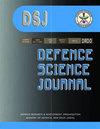运载火箭振动信号的车载频域分析体系结构
IF 0.8
4区 工程技术
Q3 MULTIDISCIPLINARY SCIENCES
引用次数: 0
摘要
机载结构的动力学特性对飞行器在飞行过程中的稳定性起着至关重要的作用。对结构的模态和谱特性进行了模拟和分析。地面试验是在接近飞行条件的环境条件下进行的,并有一些假设。随后,基于飞行遥测数据,对机载任务算法和自动飞行员滤波器系数进行微调。本文试图设计一种新的结构,用于分析飞行器上的模态和频谱随机振动信号,并识别主频。基于分析结果,任务模式算法和滤波器系数可以在机载进行微调,以提高控制效果和稳定性。三种类型的窗口,即Hann、Hamming和Blackman-Harris,使用FIR滤波器结构用广义方程配置。为了更好地包容实时数据,输入信号数据的重叠是用BRAM实现的。数据从时域到频域的域转换是使用Radix-2BF架构通过FFT进行的。FFT输出数据被处理用于计算功率谱密度。使用阵列搜索方法识别主频,并使用Goldschmidt算法对PSD进行平均以获得更好的精度。所提出的架构是用高斯白噪声填充的300Hz点频率的合成和多普勒信号合成、实现和测试的。在识别光斑频率和生成PSD阵列方面取得了令人满意的结果。本文章由计算机程序翻译,如有差异,请以英文原文为准。
An Architecture for On board Frequency Domain Analysis of Launch Vehicle Vibration Signals
The dynamic properties of the airborne structures plays a crucial role in the stability of the vehicle during
flight. Modal and spectral behaviour of the structures are simulated and analysed. Ground tests are carried out with environmental conditions close to the flight conditions, with some assumptions. Subsequently, based on the flight telemetered data, the on-board mission algorithm and the auto-pilot filter coefficients are fine tuned. An attempt is made in this paper to design a novel architecture for analysing the modal and spectral random vibration signals on-board the flight vehicle and to identify the dominant frequencies. Based on the analysed results, the mission mode algorithm and the filter coefficients can be fine tuned on-board for better effectiveness in control and providing more stability. Three types of windows viz. Hann, Hamming and Blackman-Harris are configured with a generalised equation using FIR filter structure. The overlapping of the input signal data for better inclusiveness of the real-time data is implemented with BRAM. The domain conversion of the data from time domain to frequency domain is carried out with FFT using Radix-2 BF architecture. The FFT output data are processed for calculating the power spectral density. The dominant frequency is identified using the array search method and Goldschmidt algorithm is utilised for the averaging of the PSDs for better precision. The proposed architecture is synthesised, implemented and tested with both Synthetic and doppler signal of 300 Hz spot frequency padded with Gaussian white noise. The results are highly satisfactory in identifying the spot frequency and generating the PSD array.
求助全文
通过发布文献求助,成功后即可免费获取论文全文。
去求助
来源期刊

Defence Science Journal
综合性期刊-综合性期刊
CiteScore
1.80
自引率
11.10%
发文量
69
审稿时长
7.5 months
期刊介绍:
Defence Science Journal is a peer-reviewed, multidisciplinary research journal in the area of defence science and technology. Journal feature recent progresses made in the field of defence/military support system and new findings/breakthroughs, etc. Major subject fields covered include: aeronautics, armaments, combat vehicles and engineering, biomedical sciences, computer sciences, electronics, material sciences, missiles, naval systems, etc.
 求助内容:
求助内容: 应助结果提醒方式:
应助结果提醒方式:


